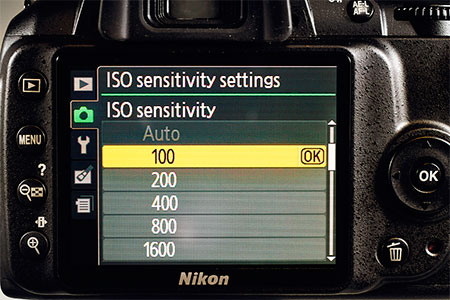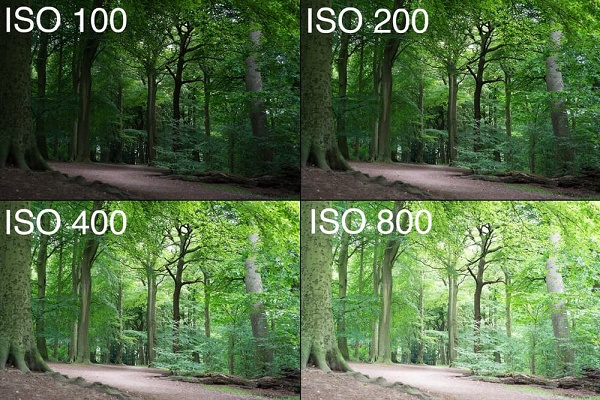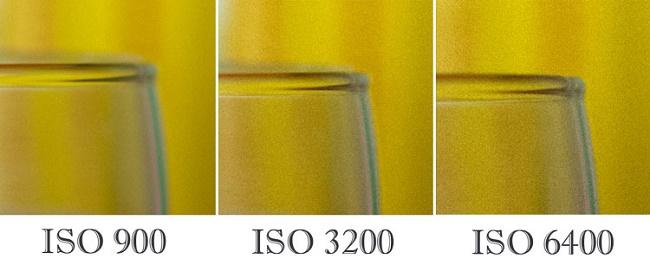Effective use of ISO settings in the camera
Most cameras, with the exception of inexpensive soap cases, provide for the possibility of manually adjusting the ISO. And if this abbreviation doesn’t cause questions to professional photographers, not all amateurs know about this important parameter in photography. In what shooting conditions can be useful to use the manual mode iso settings in the camera, tell you below.
Content
Deciphering the concept
The camera's ISO is a quantitative measure of the sensitivity of the matrix to light, which meets the generally accepted standards set by the manufacturer. The abbreviation is as follows: International Standards Organization. The sensitivity index is determined by the light conditions and is indicated on the camera in integers 100, 200, etc.The range of available values in different models may vary. For manual adjustment of exposure parameters - shutter speed and aperture - the selection of the appropriate sensitivity value is important.

When setting small values of sensitivity in the range of 100, for example, to get a good frame good illumination required. At small values of the sensitivity parameter and the right choice of exposure pairs, the images are clear and sharp.
This rule clearly illustrates an example of images made with different sensitivity settings: 100 (left) and 3200 (right). On the frame on the right, the graininess (digital noise) is more noticeable.

Relationship with other exposure parameters
Changing the ISO directly affects shutter speed and aperture values. With automatic setup, the camera itself selects the optimal exposure pair. Manual tuning assumes that the user makes this choice. Before setting a parameter, consider the following important points:
- lighting level - whether the subject is lit enough;
- frame dynamics (fixed or moving object is removed);
- to work out options for leveling noise in low light, if the grain in the frame is undesirable;
- using a tripod will help stabilize the frame during long exposures.
Examples of using different parameter values
For shooting on a clear sunny day Professionals recommend using a standard of 100 or lower, but no higher than 200. Low sensitivity of the matrix in bright light ensures good image quality. The magnitude of the sensitivity of the matrix 100-200 is usually used for studio shooting.
When shooting outside on cloudy days, as well as in the shade or in a room without additional lighting, the optimum values of the parameter will be ISO 200-400. A little higher you can raise the setting when shooting at twilight time of day: the recommended limits are 400 - 800.
Important! At ISO 400 and higher, noise begins to appear in the images. And the more of them, the worse the image quality. To level the effects of noise can be the selection of aperture and shutter speed, use a tripod to stabilize the frame.

With higher ISO values - 800 and higher - you have to work in the following cases:
- shooting of children on a moving carousel and other moments with dynamic movement of objects in the frame;
- on excursions in a museum, at a concert or in a theater, in other rooms where it is forbidden to use a flash;
- when shooting memorable moments (blowing out the candle on the cake, kissing the newlyweds, shaking hands, and the like, when using the flash distracts);
- shooting sports competitions, demonstrations and marches;
- night shooting.

The camera phone and camera provides automatic setting of the parameter of sensitivity of the matrix to lighting. This mode is convenient to use when you do not have time to experiment with manual settings in order to obtain artistic shots. As a rule, self-lovers use automatic settings.
ISO camera selection: recommendations
Any digital photographic equipment is marked with numerical measurement indicators. Along with the resolution of the matrix, the multiplicity of the zoom and other parameters, the available range of sensitivity is indicated. This parameter only indirectly reflects the ability of the camera to shoot in low light conditions.
Very high ISOs declared by the manufacturer on devices of compact dimensions with small photosensitive elements (dies) are an option that is useless in practice. Due to the high level of digital noise at such values, the images will represent a red-blue mix of dots with a subtle image of the object. The figure illustrates the level of sensitivity of the matrix at different values of sensitivity to light.

In addition to the ISO range, it is important to pay attention to sensor size. All other things being equal, the noise level in the image will be lower. But it is worth remembering that the better the matrix, the more expensive the camera.

/rating_off.png)











